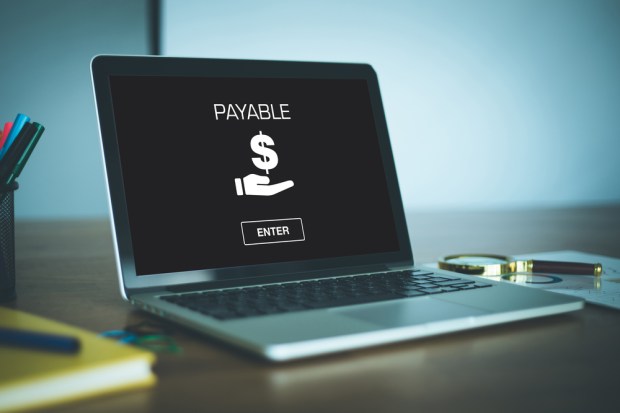How To Push For eB2B Payments When Vendors Don’t Want Them

In the constant fight against paper, service providers have been tackling the paper check in B2B payments for several years, with minimal success. There is evidence that change is happening, though, albeit slowly.
ACH has often been assumed to be the payment rail poised to take over paper checks as the dominant rail in B2B payments. Indeed, research released from NACHA last year found that suppliers are expecting this, too. Accounts receivable executives told researchers that they anticipate ACH to make up 45 percent of the payments they receive by 2020, while checks will decline to 34 percent.
However, just because vendors expect ACH to take over checks doesn’t necessarily mean they want this change to happen. According to Ernest Rolfson, CEO of electronic B2B Payments-as-a-Service (PaaS) firm Finexio, rarely is a vendor eager to embrace electronic payments, no matter how much service providers and corporate buyers want them to do so.
“That’s what we want, and what our clients want,” Rolfson recently told PYMNTS about the promotion of electronic rails in accounts payable. “But it’s about how to get the right payment — and sometimes, we know vendors will never take card.”
It’s why holistic service providers in the B2B payments space must include support for paper checks, as clunky as the rail may be. In the least, a third-party service provider can reduce the friction of checks by taking on the printing and mailing for its clients, cutting down on cost and wasted time.
In some ways, it’s a necessary evil, as suppliers still often prefer to receive paper checks, despite industry efforts to push ePayments.
“I don’t see suppliers eager to get rid of checks at all,” noted Rolfson. “It’s really a lack of education.”
This presents a huge challenge for B2B payments: how to enable businesses to pay via the rails they want, particularly when they want to pay electronically, while reducing friction for the vendors to receive those payments. Some players in the market are taking a new approach to ePayments adoption in the B2B sphere, other than forcing suppliers to accept ePayments. Rather, they’re developing multi-rail tools through which buyers can use one rail and suppliers can receive via another rail.
Such is the tactic behind CredX, Finexio’s new solution announced this week, which lets companies deploy their existing physical or virtual card products and programs into the Finexio platform. Businesses can pay using their cards, while suppliers can still receive payments via check or ACH.
It’s this inclusion of check services that’s so important for a well-rounded B2B payment service, noted Rolfson. While paper checks are expensive and come with a hefty load of friction, vendors struggle to manage the expense of card acceptance, and aren’t ecstatic about making the shift to ACH.
“The reality is ACH has very inherent weaknesses,” he said, citing issues of data and speed. “Folks do not want to sign up for ACH. There’s always going to be some percentage of check, so as a payments company, how can I look a client in the face and say, ‘We’re going to help you with your payments — oh, but those [payment checks] we can’t help you with’?”
Rolfson noted that while the research certainly shows an increase in ACH volume in the B2B payments space, anecdotally, he hasn’t seen an acceleration in ACH adoption.
“And I definitely don’t see people clamoring for ACH,” he added.
This past year, significant investments by credit card giants — including Visa, Mastercard and American Express — have revved up interest for the commercial card opportunity in accounts payable. Looking further down the road, Rolfson said he sees commercial card acceptance accelerating on the vendor side, as a result of the industry’s focus on not only the card-issuing side, but the acquiring side of the transaction — i.e., the vendor’s side.
That same NACHA report predicted that only 12.5 percent of B2B transactions received by vendors will be via commercial card by the end of the decade. However, considering the renewed investments in commercial card services and solutions, as well as the emerging offerings that let vendors receive credit card payments via a different rail, it’s quite likely that commercial card adoption could be even higher in B2B payments by 2020.
Regardless of what rail ends up on top, no one payment technology will ever be the sole tool used to move money between companies. As such, one-size-fits-all solutions aren’t the best strategy to tackle the issue of paper in B2B payments, Rolfson said, adding that it’s imperative for solution providers to work on both sides of a transaction to ease as much friction as possible.
With greater focus on the acquiring side of the transaction, rising commercial card adoption will likely address the issue of a lack of supplier education about the shift away from paper checks, and promote greater adoption of electronic B2B payments across rails.
“The issuing side has been on it for some time, and I think the acquiring side is starting to get onto it, which will drive vendor acceptance,” Rolfson stated. “I see we’re still in a five-year, very strong growth curve that’s fairly explosive. I see more entrants coming in, and more banks getting into the game — which means the education problem around ePayments acceptance is really going to continue to improve.”
